
User Guide
Service Quotas
Copyright © 2024 Amazon Web Services, Inc. and/or its affiliates. All rights reserved.

Service Quotas User Guide
Service Quotas: User Guide
Copyright © 2024 Amazon Web Services, Inc. and/or its affiliates. All rights reserved.
Amazon's trademarks and trade dress may not be used in connection with any product or service
that is not Amazon's, in any manner that is likely to cause confusion among customers, or in any
manner that disparages or discredits Amazon. All other trademarks not owned by Amazon are
the property of their respective owners, who may or may not be affiliated with, connected to, or
sponsored by Amazon.

Service Quotas User Guide
Table of Contents
What is Service Quotas? ................................................................................................................. 1
Features of Service Quotas ........................................................................................................................ 1
Terminology in Service Quotas ................................................................................................................. 2
Accessing Service Quotas ............................................................................................................................ 3
Getting started: Customize the Service Quotas dashboard .......................................................... 5
Viewing service quotas ................................................................................................................... 6
Requesting a quota increase ......................................................................................................... 11
Using the AWS Management Console to request an increase .......................................................... 11
Using the AWS CLI to request a quota increase .................................................................................. 12
Verifying your quota request ................................................................................................................... 18
Tagging resources .......................................................................................................................... 23
Supported resources .................................................................................................................................. 23
Tag restrictions ........................................................................................................................................... 24
Enabling required permissions ................................................................................................................ 24
Managing tags ............................................................................................................................................ 25
Managing tags from the AWS Management Console ................................................................... 25
Managing tags (CLI or API) ................................................................................................................. 26
Controlling access using tags .................................................................................................................. 26
Using request templates ............................................................................................................... 28
Security .......................................................................................................................................... 30
Data protection ........................................................................................................................................... 30
Encryption at rest ................................................................................................................................. 31
Encryption in transit ............................................................................................................................ 31
Logging and monitoring ........................................................................................................................... 32
Overview ................................................................................................................................................. 32
Logging Service Quotas APIs with CloudTrail ................................................................................. 32
Using CloudWatch alarms ................................................................................................................... 36
Identity and access management ........................................................................................................... 37
Grant permissions using IAM policies ............................................................................................... 37
AWS managed policies ........................................................................................................................ 38
API actions for Service Quotas .......................................................................................................... 44
Service Quotas resources .................................................................................................................... 45
Resource-level permissions for Service Quotas .............................................................................. 45
Condition keys for Service Quotas .................................................................................................... 45
iii

Service Quotas User Guide
Predefined AWS managed policies for Service Quotas ................................................................. 46
Compliance validation ............................................................................................................................... 46
Resilience ...................................................................................................................................................... 47
Infrastructure Security .............................................................................................................................. 48
Quotas for Service Quotas ............................................................................................................ 49
Document history .......................................................................................................................... 53
iv

Service Quotas User Guide
What is Service Quotas?
With Service Quotas, you can view and manage your quotas for AWS services from a central
location. Quotas, also referred to as limits in AWS services, are the maximum values for the
resources, actions, and items in your AWS account. Each AWS service defines its quotas and
establishes default values for those quotas. If your business needs aren't met by the default limit
of service resources or operations that apply to an AWS account, resource, or an AWS Region, you
might need to increase your service quota values. Service Quotas enables you to look up your
service quotas and to request increases. AWS Support might approve, deny, or partially approve
your requests.
Contents
• Features of Service Quotas
• Terminology in Service Quotas
• Accessing Service Quotas
Features of Service Quotas
Service Quotas provides the following features:
View your service quotas
The Service Quotas console provides quick access to the AWS default quota values for your
account, across all AWS Regions. When you select a service in the Service Quotas console, you
see the service's quotas and if that quota is adjustable at the AWS account level. Applied quotas
are overrides, or increases for a specific quota, over the AWS default value.
Request a service quota increase
To see if a quota is adjustable, go into the console, navigate to AWS services, and select the
service from the list. From the service's details page, view the Adjustable column.
Each adjustable quota says at which level the quota can be increased. For service quotas that
are adjustable at the account level, you can use Service Quotas to request a quota increase.
You can also increase certain quotas at the resource level.
To request a quota increase in the Service Quotas console, select the service and the specific
quota, and then choose Request quota increase. Increases do take some time to review,
Features of Service Quotas 1

Service Quotas User Guide
process, and approve. You can also use Service Quotas API operations or the AWS CLI tools to
request service quota increases.
View current utilization of resources
After your account becomes active for a period of time, you can view a graph of your resource
utilization.
Terminology in Service Quotas
The following terms are important for understanding Service Quotas and how it works.
service quota
The maximum number of service resources or operations that apply to an AWS account or an
AWS Region. The number of AWS Identity and Access Management (IAM) roles per account is an
example of an account-based quota. The number of virtual private clouds (VPCs) per Region is
an example of a Region-based quota. To determine whether a service quota is Region-specific,
check the description of the service quota.
adjustable value
A quota value that can be increased.
applied quota
The updated quota value after a quota increase.
default value
The initial quota value established by AWS.
global quota
A service quota applied at an account level. Global quotas are available in all AWS Regions.
You can request an increase to a global quota only from US East (N. Virginia) for Public AWS
partition, AWS GovCloud (US-West) for AWS GovCloud (US) Regions, and China (Beijing) for
AWS China Regions.
usage
The number of resources or operations in use for a service quota.
Terminology in Service Quotas 2

Service Quotas User Guide
utilization
The percentage of a service quota in use. For example, if the quota value is 200 resources and
150 resources are in use, then the utilization is 75 percent.
quota context info
A structure that describes the context for a resource-level quota. For resource-level quotas,
such as Instances per OpenSearch Service Domain, you can apply the quota value
at the resource-level for each OpenSearch Service Domain in your AWS account. Together the
attributes of this structure help you understand how the quota is implemented by AWS and
how you can manage it.
context ID
Specifies the resource, or resources, to which the quota applies. The value for this field is either
an Amazon Resource Name (ARN) or *. If the value is an ARN, the quota value applies to that
resource. If the value is *, then the quota value applies to all resources of that specific type.
context scope
Specifies the scope to which the quota value is applied.
context scope type
Specifies the resource type to which the quota can be applied.
quota applied at level
Filters an API response to return applied quota values at either the account level, resource level,
or all levels.
quota requested at level
Filters an API response to return quota requests at either the account level, resource level, or all
levels.
Accessing Service Quotas
You can work with Service Quotas in the following ways:
AWS Management Console
The Service Quotas consoleis a browser-based interface that you can use to view and manage
your service quotas. You can perform almost any task that's related to your service quotas
Accessing Service Quotas 3

Service Quotas User Guide
by using the console. You can access Service Quotas from any AWS Management Console
page by choosing it on the top navigation bar, or by searching for Service Quotas in the AWS
Management Console.
AWS Command Line Interface tools
By using the AWS Command Line Interface tools, you can issue commands at your system's
command line to perform Service Quotas and other AWS tasks. This can be a faster and more
convenient approach than using the console. The command line tools also are useful if you
want to build scripts that perform AWS tasks.
AWS provides two sets of command line tools: theAWS Command Line Interface and the AWS
Tools for Windows PowerShell. For information about installing and using the AWS CLI, see
theAWS Command Line Interface User Guide. For information about installing and using the
Tools for Windows PowerShell, see the AWS Tools for Windows PowerShell User Guide.
You need AWS CLI version 2.13.20 or higher to view and manage resource-level quotas such as
Instances per domain for Amazon OpenSearch Service.
AWS SDKs
The AWS SDKs consist of libraries and sample code for various programming languages and
platforms (for example, Java, Python, Ruby, .NET, iOS and Android, and others). The SDKs
include tasks such as cryptographically signing requests, managing errors, and retrying requests
automatically. For more information about the AWS SDKs, including how to download and
install them, seeTools for Amazon Web Services.
Accessing Service Quotas 4

Service Quotas User Guide
Customizing the Service Quotas dashboard
When you open the Service Quotas console, the dashboard displays cards for up to nine AWS
services. Each card lists the number of service quotas for that AWS service. Choosing a card
opens a page displaying the quotas for the service. You can modify which services appear on the
dashboard.
To modify the dashboard service cards
1. Sign in to the AWS Management Console and open the Service Quotas console at https://
console.aws.amazon.com/servicequotas/home.
2. On the dashboard, choose Modify dashboard cards.
3. The services that are currently selected appear on the right. If you have selected nine services,
you must remove a service before you can add a different service. For each service that you
don't want on the dashboard, choose Remove.
4. To add a service to the dashboard, select it from Choose services.
5. When you have finished adding and removing services, choose Save.
Next steps
• View the AWS default value and applied values of a particular quota.
• For adjustable quotas, you can request a quota increase.
5

Service Quotas User Guide
Viewing service quotas
Service Quotas enables you to review the AWS default value and applied values of a particular
quota. Certain resource-level quotas, such as Instances per domain for Amazon OpenSearch
Service, also display applied quota values per resource. Refer to Terminology in Service Quotas for
detailed definitions of these values.
Your account's actual quota value may be less than the AWS default quota value if you recently
created the account, or if you use the account minimally.
AWS Management Console
To view the quotas for a service
1. Sign in to the AWS Management Console and open the Service Quotas console at https://
console.aws.amazon.com/servicequotas/home.
2. In the navigation pane, choose AWS services.
3. Select an AWS service from the list, or enter the name of the service in the search field.
The console displays details for the selected service's quota, including the quota name,
applied quota value, AWS default quota, utilization, and if the quota is adjustable at the
account-level or resource-level.
If the applied quota value or utilization is not available, the console displays Not available.
You can request your applied quota value through the Support Center Console.
4. Choose a specific quota name to view the Details page, which displays that quota's
description, quota code, quota ARN, utilization, applied quota value, and the AWS
default quota.
If applicable, the Details page also displays any resource-level quota, alarms, quota
increase request history, and any of the quota's tags.
AWS CLI
Viewing default quota values
View the default values for the quotas for a specific AWS service.
6

Service Quotas User Guide
• Call the ListDefaultServiceQuotas operation with a service code. If you don't have the
service code, you can get a list of supported services with the ListServices operation.
The response includes the ServiceCode and ServiceName for each service. The
ServiceCode for Amazon OpenSearch Service is es. The following CLI example retrieves
default values for Amazon OpenSearch Service quotas.
$ aws service-quotas list-aws-default-service-quotas \
--service-code es \
{
"Quotas": [
{
"QuotaName": "Domains per Region",
"Adjustable": true,
"QuotaArn": "arn:aws:servicequotas:us-east-1::123456789012:es/
L-076D529E",
"Value": 100.0,
"ServiceName": "Amazon OpenSearch Service",
"GlobalQuota": false,
"ServiceCode": "es",
"QuotaCode": "L-076D529E",
"Unit": "None",
},
{
"QuotaName": "Dedicated master instances per domain",
"Adjustable": false,
"QuotaArn": "arn:aws:servicequotas:us-east-1::123456789012:es/L-
AE676A72",
"Value": 5.0,
"ServiceName": "Amazon OpenSearch Service",
"GlobalQuota": false,
"ServiceCode": "es",
"QuotaCode": "L-AE676A72",
"Unit": "None",
},
{
"QuotaName": "Warm instances per domain",
"Adjustable": false,
"QuotaArn": "arn:aws:servicequotas:us-east-1::123456789012:es/
L-1F053E6F",
"Value": 150.0,
"ServiceName": "Amazon OpenSearch Service",
"GlobalQuota": false,
"ServiceCode": "es",
7

Service Quotas User Guide
"QuotaCode": "L-1F053E6F",
"Unit": "None",
},
{
"QuotaName": "Instances per domain",
"Adjustable": true,
"QuotaArn": "arn:aws:servicequotas:us-east-1::123456789012:es/
L-6408ABDE",
"Value": 80.0,
"ServiceName": "Amazon OpenSearch Service",
"GlobalQuota": false,
"ServiceCode": "es",
"QuotaCode": "L-6408ABDE",
"Unit": "None",
"QuotaContext": {
"ContextScope": "RESOURCE",
"ContextScopeType":
"AWS::OpenSearchService::Domain",
}
}
]
}
Viewing applied quota values
View the applied quota values for a specified AWS service. For some quotas, only the default
values are available. If the applied quota value isn't available for a quota, the quota is not
returned in the response. If this happens, contact AWS Support for the applied quota value.
• Call the ListServiceQuotas operation with a service code. You can choose to retrieve
all applied quota values either at the account-level, resource-level, or all levels by
passing ACCOUNT, RESOURCE, or ALL respectively as the value for the parameter
QuotaAppliedAtLevel.
The following CLI example retrieves all quota values applied at the account-level for
OpenSearch Service.
$ aws service-quotas list-service-quotas \
--service-code es \
--quota-applied-at-level ACCOUNT
{
8

Service Quotas User Guide
"Quotas": [
{
"QuotaName": "Domains per Region",
"Adjustable": true,
"QuotaArn": "arn:aws:servicequotas:us-east-1::123456789012:es/
L-076D529E",
"Value": 100.0,
"QuotaAppliedAtLevel": "ACCOUNT",
"ServiceName": "Amazon OpenSearch Service",
"GlobalQuota": false,
"ServiceCode": "es",
"QuotaCode": "L-076D529E",
"Unit": "None",
},
{
"QuotaName": "Dedicated master instances per domain",
"Adjustable": false,
"QuotaArn": "arn:aws:servicequotas:us-east-1::123456789012:es/L-
AE676A72",
"Value": 5.0,
"QuotaAppliedAtLevel": "ACCOUNT",
"ServiceName": "Amazon OpenSearch Service",
"GlobalQuota": false,
"ServiceCode": "es",
"QuotaCode": "L-AE676A72",
"Unit": "None",
},
{
"QuotaName": "Warm instances per domain",
"Adjustable": false,
"QuotaArn": "arn:aws:servicequotas:us-east-1::123456789012:es/
L-1F053E6F",
"Value": 150.0,
"QuotaAppliedAtLevel": "ACCOUNT",
"ServiceName": "Amazon OpenSearch Service",
"GlobalQuota": false,
"ServiceCode": "es",
"QuotaCode": "L-1F053E6F",
"Unit": "None",
},
{
"QuotaName": "Instances per domain",
"Adjustable": true,
9

Service Quotas User Guide
"QuotaArn": "arn:aws:servicequotas:us-east-1::123456789012:es/
L-6408ABDE",
"Value": 80.0,
"QuotaAppliedAtLevel": "ACCOUNT",
"ServiceName": "Amazon OpenSearch Service",
"GlobalQuota": false,
"ServiceCode": "es",
"QuotaCode": "L-6408ABDE",
"Unit": "None",
"QuotaContext": {
"ContextScope": "RESOURCE",
"ContextScopeType":
"AWS::OpenSearchService::Domain",
"ContextId": "*"
}
}
]
}
10

Service Quotas User Guide
Requesting a quota increase
For adjustable quotas, you can request a quota increase at the account-level or the resource-level.
Smaller increases are usually automatically approved while larger requests are submitted to AWS
Support. Larger increase requests take time to review, process, approve, and deploy. You can track
your request case in the AWS Support console.
Note
Quota increase requests don't receive priority support. AWS Support can approve, deny,
or partially approve your requests. If you have an urgent quota request, or if your quota
increase request is denied, contact AWS Support for assistance.
Using the AWS Management Console to request an increase
Increase your quotas at the account or resource level in the Getting Started with the AWS
Management Console.
To request a service quota increase
1. Sign in to the AWS Management Console and open the Service Quotas console at https://
console.aws.amazon.com/servicequotas/home.
2. In the navigation pane, choose AWS services.
3. Choose an AWS service from the list, or enter the name of the service in the search box.
4. If the quota is adjustable, you can request a quota increase at either the account-level or
resource-level based on the value listed in the Adjustability column.
• Account-level – Request a quota increase at the account-level for an account-level quota
such as Domains per Region for Amazon OpenSearch Service. To do so, select the quota
from the list and choose Request increase at account-level.
• Resource-level – Request a quota increase for a specific resource for a resource-level quota
such as Instances per domain for Amazon OpenSearch Service. To do so, choose the
quota name to view additional information about the quota. Under the Resource-level
quotas section, select the resource for which you want to increase the quota value, and
choose the Request increase at resource-level button.
Using the AWS Management Console to request an increase 11

Service Quotas User Guide
5. For Increase quota value, enter the new value. The new value must be greater than the
current value.
6. Choose Request.
7. To view any pending or recently resolved requests in the console, navigate to the Request
history tab from the service's details page, or choose Dashboard from the navigation pane.
For pending requests, choose the status of the request to open the request receipt. The initial
status of a request is Pending. After the status changes to Quota requested, you'll see the
case number with AWS Support. Choose the case number to open the ticket for your request.
Using the AWS CLI to request a quota increase
Requesting a quota increase using the AWS CLI requires you to provide Service Quotas with the
necessary permission to create a support case on your behalf. You can provide this permission by
attaching the AWS managed policy ServiceQuotasFullAccess to your IAM principal or adding
iam:CreateServiceLinkedRole to your existing IAM policy.
Account-level increase request AWS CLI
To request a quota increase at the account-level
The RequestServiceQuotaIncrease operation, which submits the request, requires the
quota code for the quota. So begin by getting the quota code.
The following example commands show how to request a quota increase at the account-level
for the Amazon OpenSearch Service.
1. Get the list of services supported by Service Quotas with the ListServices operation.
The response includes the ServiceCode and ServiceName for each service. The
ServiceCode for Amazon OpenSearch Service is es.
2. Get the list of Amazon OpenSearch Service quotas and their corresponding applied
quota values at the account-level by calling the ListServiceQuotas operation with request
parameters ServiceCode as es, and QuotaAppliedAtLevel as ACCOUNT. The response
includes the QuotaName, QuotaCode, Value, and QuotaAppliedAtLevel for each quota
of the Amazon OpenSearch Service that is applied at the account-level. If the value in
the QuotaAppliedAtLevel field is ACCOUNT, then the Value represents the Applied
quota value at the account-level. The following CLI example retrieves the quota code for a
OpenSearch Service quota.
Using the AWS CLI to request a quota increase 12

Service Quotas User Guide
$ aws service-quotas list-service-quotas \
--service-code es \
--quota-applied-at-level ACCOUNT
{
"Quotas": [
{
"QuotaName": "Domains per Region",
"Adjustable": true,
"QuotaArn": "arn:aws:servicequotas:us-east-1::123456789012:es/
L-076D529E",
"Value": 100.0,
"QuotaAppliedAtLevel": "ACCOUNT",
"ServiceName": "Amazon OpenSearch Service",
"GlobalQuota": false,
"ServiceCode": "es",
"QuotaCode": "L-076D529E",
"Unit": "None",
},
{
"QuotaName": "Dedicated master instances per domain",
"Adjustable": false,
"QuotaArn": "arn:aws:servicequotas:us-east-1::123456789012:es/L-
AE676A72",
"Value": 5.0,
"QuotaAppliedAtLevel": "ACCOUNT",
"ServiceName": "Amazon OpenSearch Service",
"GlobalQuota": false,
"ServiceCode": "es",
"QuotaCode": "L-AE676A72",
"Unit": "None",
},
{
"QuotaName": "Warm instances per domain",
"Adjustable": false,
"QuotaArn": "arn:aws:servicequotas:us-east-1::123456789012:es/
L-1F053E6F",
"Value": 150.0,
"QuotaAppliedAtLevel": "ACCOUNT",
"ServiceName": "Amazon OpenSearch Service",
"GlobalQuota": false,
"ServiceCode": "es",
"QuotaCode": "L-1F053E6F",
"Unit": "None",
Using the AWS CLI to request a quota increase 13

Service Quotas User Guide
},
{
"QuotaName": "Instances per domain",
"Adjustable": true,
"QuotaArn": "arn:aws:servicequotas:us-east-1::123456789012:es/
L-6408ABDE",
"Value": 80.0,
"QuotaAppliedAtLevel": "ACCOUNT",
"ServiceName": "Amazon OpenSearch Service",
"GlobalQuota": false,
"ServiceCode": "es",
"QuotaCode": "L-6408ABDE",
"Unit": "None",
"QuotaContext": {
"ContextScope": "RESOURCE",
"ContextScopeType":
"AWS::OpenSearchService::Domain",
"ContextId": "*"
}
]
}
3.
Next, call the RequestServiceQuotaIncrease operation and specify the QuotaCode in the
request parameter.
The following example requests an increase at the account-level in the Instances per
domain quota to 100. It uses the required quota code, L-6408ABDE, to identify the
quota. If the command completes successfully, the Status field in the response displays
the current status of the request. The QuotaRequestedAtLevel field in the response
specifies that this request applies to the account-level.
Note
You can't request a quota increase at the account-level for a resource-level quota
through the AWS CLI. This operation results in the creation of a support case
where you can provide the ARN to specify the resource on which the new quota
value should apply. However, the Instances per domain quota for Amazon
OpenSearch Service is an exception.
$ aws service-quotas request-service-quota-increase \
Using the AWS CLI to request a quota increase 14

Service Quotas User Guide
--service-code es \
--quota-code L-6408ABDE \
--desired-value 100
{
"RequestedQuota": {
"QuotaName": "Instances per domain",
"Status": "PENDING",
"DesiredValue": 100,
"Created": 1580446904.067,
"QuotaArn": "arn:aws:servicequotas:us-east-1::123456789012:es/
L-6408ABDE",
"ServiceName": "Amazon OpenSearch Service",
"GlobalQuota": false,
"ServiceCode": "es",
"QuotaCode": "L-6408ABDE",
"Requester": "{\"accountId\":\"123456789012\",\"callerArn\":
\"arn:aws:iam::123456789012:root\"}",
"QuotaRequestedAtLevel": "ACCOUNT"
"Id": "a12345",
"Unit": "None"
"QuotaContext": {
"ContextId": "*"
"ContextScopeType": "AWS::OpenSearchService::Domain",
"ContextScope": "RESOURCE",
}
}
}
4. To get the updated status of the request, use the GetRequestedServiceQuotaChange,
ListRequestedServiceQuotaChangeHistory or
ListRequestedServiceQuotaChangeHistoryByQuota operations.
Resource-level quota increase request AWS CLI
To request a quota increase at the resource-level
The RequestServiceQuotaIncrease operation, which submits the request, requires the
quota code for the quota. So begin by getting the quota code. To request a quota increase for
a specific resource, use the Amazon Resource Name (ARN) ResourceARN as the value for the
ContextId parameter when you make your request.
Using the AWS CLI to request a quota increase 15

Service Quotas User Guide
The following example commands show how to request a resource-level quota increase for the
OpenSearch Service.
1. Get the list of services supported by Service Quotas with the ListServices operation.
The response includes the ServiceCode and ServiceName for each service. The
ServiceCode for Amazon OpenSearch Service is es.
2. Get the list of Amazon OpenSearch Service quotas and their corresponding applied quota
values at the resource-level by calling the ListServiceQuotas operation with request
parameters ServiceCode as es, and QuotaAppliedAtLevel as RESOURCE. The response
includes the QuotaName, QuotaCode, Value, and QuotaAppliedAtLevel for each
quota of the Amazon OpenSearch Service that is applied at the resource-level. If the
value in the QuotaAppliedAtLevel field is RESOURCE, then the Value represents the
Applied quota value at the resource-level. In this case, the response for this quota will also
contain the QuotaContext structure which further specifies the ContextId or the ARN to
which the quota value is applied. The following CLI example retrieves the quota code for a
OpenSearch Service quota.
$ aws service-quotas list-service-quotas \
--service-code es \
--quota-applied-at-level RESOURCE
{
"Quotas": [
{
"QuotaName": "Instances per domain",
"Adjustable": true,
"QuotaArn": "arn:aws:servicequotas:us-east-1::123456789012:es/
L-6408ABDE",
"Value": 100.0,
"QuotaAppliedAtLevel": "RESOURCE",
"ServiceName": "Amazon OpenSearch Service",
"GlobalQuota": false,
"ServiceCode": "es",
"QuotaCode": "L-6408ABDE",
"Unit": "None",
"QuotaContext": {
"ContextScope": "RESOURCE",
"ContextScopeType":
"AWS::OpenSearchService::Domain",
"ContextId": "arn:aws:esus-
east-1:123456789012:domain/opensearch-domain-1",
}
Using the AWS CLI to request a quota increase 16

Service Quotas User Guide
},
{
"QuotaName": "Instances per domain",
"Adjustable": true,
"QuotaArn": "arn:aws:servicequotas:us-east-1::123456789012:es/
L-6408ABDE",
"Value": 100.0,
"QuotaAppliedAtLevel": "RESOURCE",
"ServiceName": "Amazon OpenSearch Service",
"GlobalQuota": false,
"ServiceCode": "es",
"QuotaCode": "L-6408ABDE",
"Unit": "None",
"QuotaContext": {
"ContextScope": "RESOURCE",
"ContextScopeType":
"AWS::OpenSearchService::Domain",
"ContextId": "arn:aws:esus-
east-1:123456789012:domain/opensearch-domain-2",
}
}
]
}
3.
Next, call the RequestServiceQuotaIncrease operation and specify the ServiceCode,
QuotaCode, ContextId, and DesiredValue request parameters.
The following example requests an increase in the Instances per domain quota to
100 for a specific Amazon OpenSearch Service domain with the ARN as arn:aws:es:us-
east-1:123456789012:domain/opensearch-domain-1. If the command completes
successfully, the Status field in the response displays the current status of the request.
QuotaRequestedAtLevel field in the response contains the value RESOURCE which
specifies that this request is for a specific resource.
$ aws service-quotas request-service-quota-increase \
--service-code es \
--quota-code L-6408ABDE \
--desired-value 200 \
--context-id arn:aws:es:us-east-1:123456789012:domain/opensearch-
domain-1
{
"RequestedQuota": {
Using the AWS CLI to request a quota increase 17

Service Quotas User Guide
"QuotaName": "Instances per domain",
"Status": "PENDING",
"DesiredValue": 200.0,
"Created": 1580446904.067,
"QuotaArn": "arn:aws:servicequotas:us-east-1:123456789012:es/
L-6408ABDE",
"ServiceName": "Amazon OpenSearch Service",
"GlobalQuota": false,
"ServiceCode": "es",
"QuotaCode": "L-6408ABDE",
"Requester": "{\"accountId\":\"123456789012\",\"callerArn\":
\"arn:aws:iam::123456789012:root\"}",
"QuotaRequestedAtLevel": "RESOURCE",
"Id": "a12345",
"Unit": "None"
"QuotaContext": {
"ContextId": "arn:aws:es:us-east-1:123456789012:domain/
opensearch-domain-1"
"ContextScopeType": "AWS::OpenSearchService::Domain",
"ContextScope": "RESOURCE",
}
}
}
4. To get the updated status of the request, use the GetRequestedServiceQuotaChange,
ListRequestedServiceQuotaChangeHistory or
ListRequestedServiceQuotaChangeHistoryByQuota operations.
After the request is resolved, the Applied quota value for the quota is set to the new value.
Verifying your quota request
Verify your quota request by viewing the request history history in the Service Quotas console. The
console displays all open quota requests and requests closed in the last 90 days.
Note
Some AWS services may only be available in certain AWS Regions. If you have quota
increase requests in different Regions, be sure to select the appropriate Region first.
Verifying your quota request 18

Service Quotas User Guide
Using the AWS Management Console
To view the quota request history
1. Sign in to the AWS Management Console and open the Service Quotas console at https://
console.aws.amazon.com/servicequotas/home.
2. To view any pending or recently resolved requests, choose Quota request history from the
navigation pane.
The Recent quota increase requests panel displays information about your open recent quota
increase requests and any requests closed within 90 days.
• Service – Displays the service name selected for the request.
• Quota name – Displays the quota name selected for the quota increase.
• Status – Displays the status of a request for a quota increase.
You may see the following status types:
• Pending – Quota increase request is under review by AWS.
• Case opened – Service Quotas has opened a support case to process the request.
• Approved – Quota increase request is approved.
• Rejected – Quota increase request can't be approved by Service Quotas. Contact AWS
Support for more details.
• Case closed – The support case associated with this request was closed. View the support
case correspondence for more information.
• Request not valid – Service Quotas can't process your resource-level quota increase request
because the ResourceARN specified as part of the ContextId attribute is not valid.
• Requested quota value – The increased quota value you requested for the quota.
• Request date – The date you requested the quota increase.
• Last updated date – The last date the request received an update.
View details about a service, quota name, and status in the Quota request history table by
choosing one of the entries.
Verifying your quota request 19

Service Quotas User Guide
Using AWS CLI
To view the quota request history
•
The ListRequestedServiceQuotaChangeHistory operation, which submits the
request, requires a QuotaRequestedAtLevel parameter. The following CLI example is for
all resource and account level requests.
$ aws servicequotas list-requested-service-quota-change-history \
--quota-applied-at-level ALL
{
"RequestedQuotas": [
{
"QuotaName": "Instances per domain",
"Status": "PENDING",
"DesiredValue": 200.0,
"Created": 1580446904.067,
"QuotaArn": "arn:aws:servicequotas:us-east-1:123456789012:es/
L-6408ABDE",
"ServiceName": "Amazon OpenSearch Service",
"GlobalQuota": false,
"ServiceCode": "es",
"QuotaCode": "L-6408ABDE",
"Requester": "{\"accountId\":\"123456789012\",\"callerArn\":
\"arn:aws:iam::123456789012:root\"}",
"QuotaRequestedAtLevel": "RESOURCE",
"Id": "a12345",
"Unit": "None"
"QuotaContext": {
"ContextId": "arn:aws:es:us-east-1:123456789012:domain/
opensearch-domain-1"
"ContextScopeType": "AWS::OpenSearchService::Domain",
"ContextScope": "RESOURCE"
}
},
{
"QuotaName": "Instances per domain",
"Status": "PENDING",
"DesiredValue": 200.0,
"Created": 1580446904.067,
"QuotaArn": "arn:aws:servicequotas:us-east-1:123456789012:es/
L-6408ABDE",
"ServiceName": "Amazon OpenSearch Service",
Verifying your quota request 20

Service Quotas User Guide
"GlobalQuota": false,
"ServiceCode": "es",
"QuotaCode": "L-6408ABDE",
"Requester": "{\"accountId\":\"123456789012\",\"callerArn\":
\"arn:aws:iam::123456789012:root\"}",
"QuotaRequestedAtLevel": "RESOURCE",
"Id": "a12345",
"Unit": "None"
"QuotaContext": {
"ContextId": "arn:aws:es:us-east-1:123456789012:domain/
opensearch-domain-2",
"ContextScopeType": "AWS::OpenSearchService::Domain",
"ContextScope": "RESOURCE"
}
},
{
"QuotaName": "Domains per Region",
"Status": "PENDING",
"DesiredValue": 120.0,
"Created": 1580446904.067,
"Adjustable": true,
"QuotaArn": "arn:aws:servicequotas:us-east-1::123456789012:es/
L-076D529E",
"ServiceName": "Amazon OpenSearch Service",
"GlobalQuota": false,
"ServiceCode": "es",
"QuotaCode": "L-076D529E",
"Requester": "{\"accountId\":\"123456789012\",\"callerArn\":
\"arn:aws:iam::123456789012:root\"}"
"QuotaRequestedAtLevel": "ACCOUNT",
"Id": "a123456",
"Unit": "None",
},
{
"QuotaName": "Instances per domain",
"Status": "PENDING"
"DesiredValue": 300.0,
"Created": 1580446904.067,
"QuotaArn": "arn:aws:servicequotas:us-east-1::123456789012:es/
L-6408ABDE",
"ServiceName": "Amazon OpenSearch Service",
"GlobalQuota": false,
"ServiceCode": "es",
"QuotaCode": "L-6408ABDE",
Verifying your quota request 21

Service Quotas User Guide
"Requester": "{\"accountId\":\"123456789012\",\"callerArn\":
\"arn:aws:iam::123456789012:root\"}"
"QuotaRequestedAtLevel": "ACCOUNT",
"Id": "a1234567",
"Unit": "None",
"QuotaContext": {
"ContextId": "*",
"ContextScopeType":
"AWS::OpenSearchService::Domain",
"ContextScope": "RESOURCE"
}
}
]
}
Verifying your quota request 22

Service Quotas User Guide
Managing Service Quotas resources with tags
You can use tags to categorize resources by purpose, owner, environment, or other criteria. A tag
is a custom attribute label that you add to an AWS resource to make it easier to identify, organize,
and search for resources. Each tag includes two parts:
•
A tag key, such as CostCenter, Environment, or Project. Tag keys are case sensitive.
•
A tag value, such as 111122223333 or Production. You can set the value of a tag to an empty
string, but you can't set the value of a tag to null. Omitting the tag value is the same as using an
empty string. Like tag keys, tag values are case sensitive.
Tags help you do the following:
• Identify and organize your AWS resources. Many services support tagging, so you can assign the
same tag to resources from different services to indicate that the resources are related.
• Track your AWS costs. You activate these tags on the AWS Billing and Cost Management
dashboard. AWS uses the tags to categorize your costs and deliver a monthly cost allocation
report to you. For more information, see Use cost allocation tags in the AWS Billing User Guide.
• Control access to your AWS resources. For more information, see Controlling access using tags in
the IAM User Guide.
Topics
• Service Quotas resources that support tagging
• Tag restrictions
• Enabling the required permissions for tagging Service Quotas resources
• Managing Service Quotas tags
• Controlling access using Service Quotas tags
Service Quotas resources that support tagging
Service Quotas supports tagging the Applied quotas resource. An applied quota is a quota that
you requested an increase for, and the increase was approved by AWS Support.
Supported resources 23
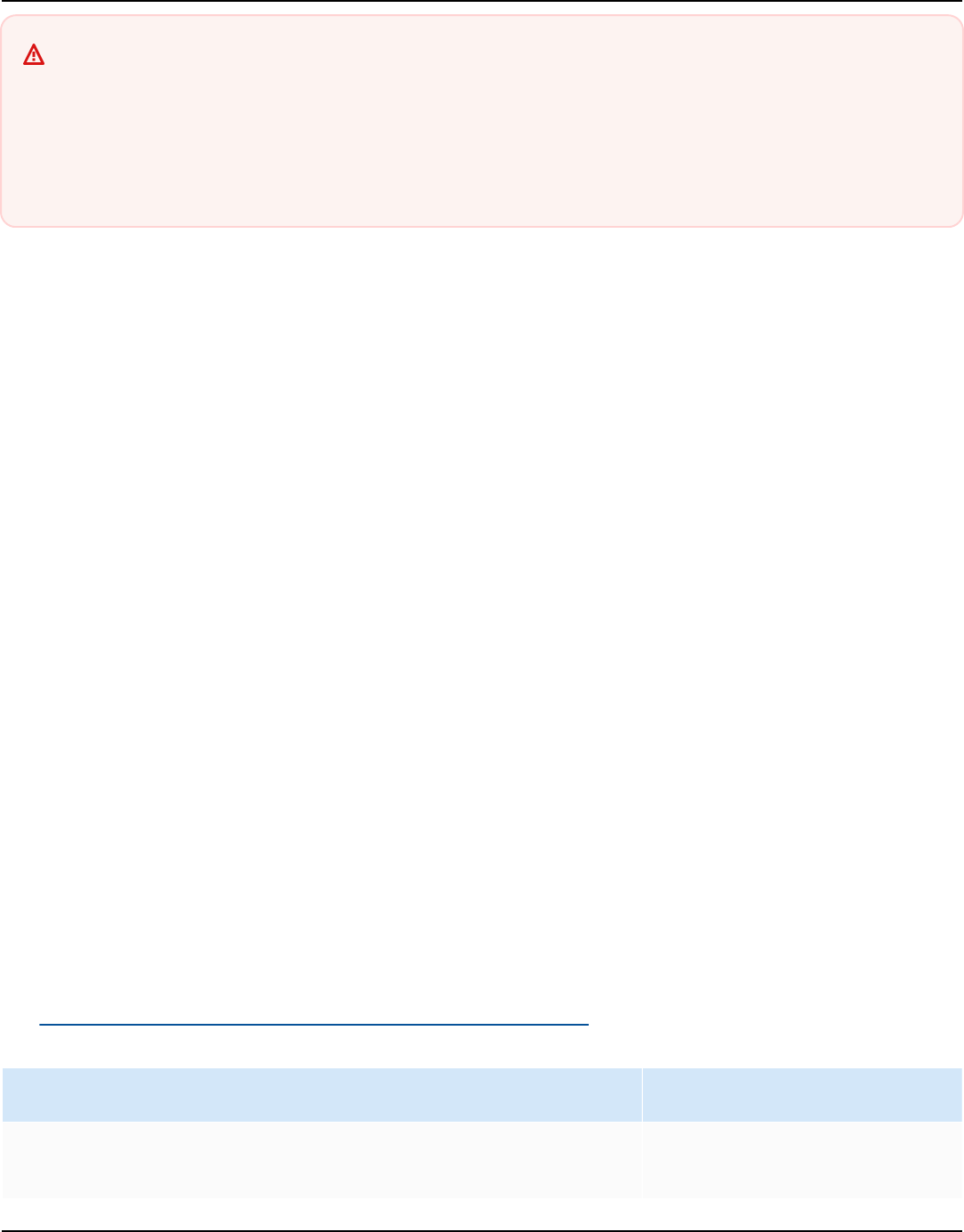
Service Quotas User Guide
Important
You can only tag quotas if they have an applied quota value. Quotas with default quota
values cannot be tagged.
Do not store personally identifiable information (PII) or other confidential or sensitive
information in tags. Tags are not intended to be used for private or sensitive data.
Tag restrictions
Restrictions apply to tags on Service Quotas resources, including:
• Maximum number of tags that you can assign to a resource – 50
• Maximum tag key length – 128 Unicode characters
• Maximum tag value length – 256 Unicode characters
• Valid characters for tag key and value – a-z, A-Z, 0-9, space, and the following characters: _ . : / =
+ - and @
• Tag keys and values are case sensitive.
•
Don't use aws: as a prefix for tag keys. It is reserved for AWS use.
Enabling the required permissions for tagging Service Quotas
resources
You must configure permissions to allow your users or roles to manage tags in Service Quotas. The
permissions that are required to administer tags generally correspond to the API operations for the
task.
To allow IAM principles, such as roles or users, to use Service Quotas for tagging operations, attach
the ServiceQuotasReadOnlyAccessAWS managed policy to the principals.
Task Required permission
Add tags to applied quotas
servicequotas:List
TagsForResource
Tag restrictions 24

Service Quotas User Guide
Task Required permission
servicequotas:TagR
esource
View tags for an applied quota
servicequotas:List
TagsForResource
Remove existing tags from an applied quota
servicequotas:Unta
gResource
Edit existing tag values for applied quotas
servicequotas:List
TagsForResource
servicequotas:TagR
esource
servicequotas:Unta
gResource
Managing Service Quotas tags
You can manage Service Quotas tags by using the AWS Management Console, the AWS CLI, or the
AWS API.
Managing tags from the AWS Management Console
1. Sign in to the AWS Management Console and open the Service Quotas console at https://
console.aws.amazon.com/servicequotas/home.
2. In the navigation page, choose AWS services.
3. Choose an AWS service from the list, or enter the name of the service in the search box.
4. Choose a service that has a value in the Applied quota value column.
5. In the Tags section, choose Manage tags. This option is not available for quotas that don't
have an applied quota value.
Managing tags 25
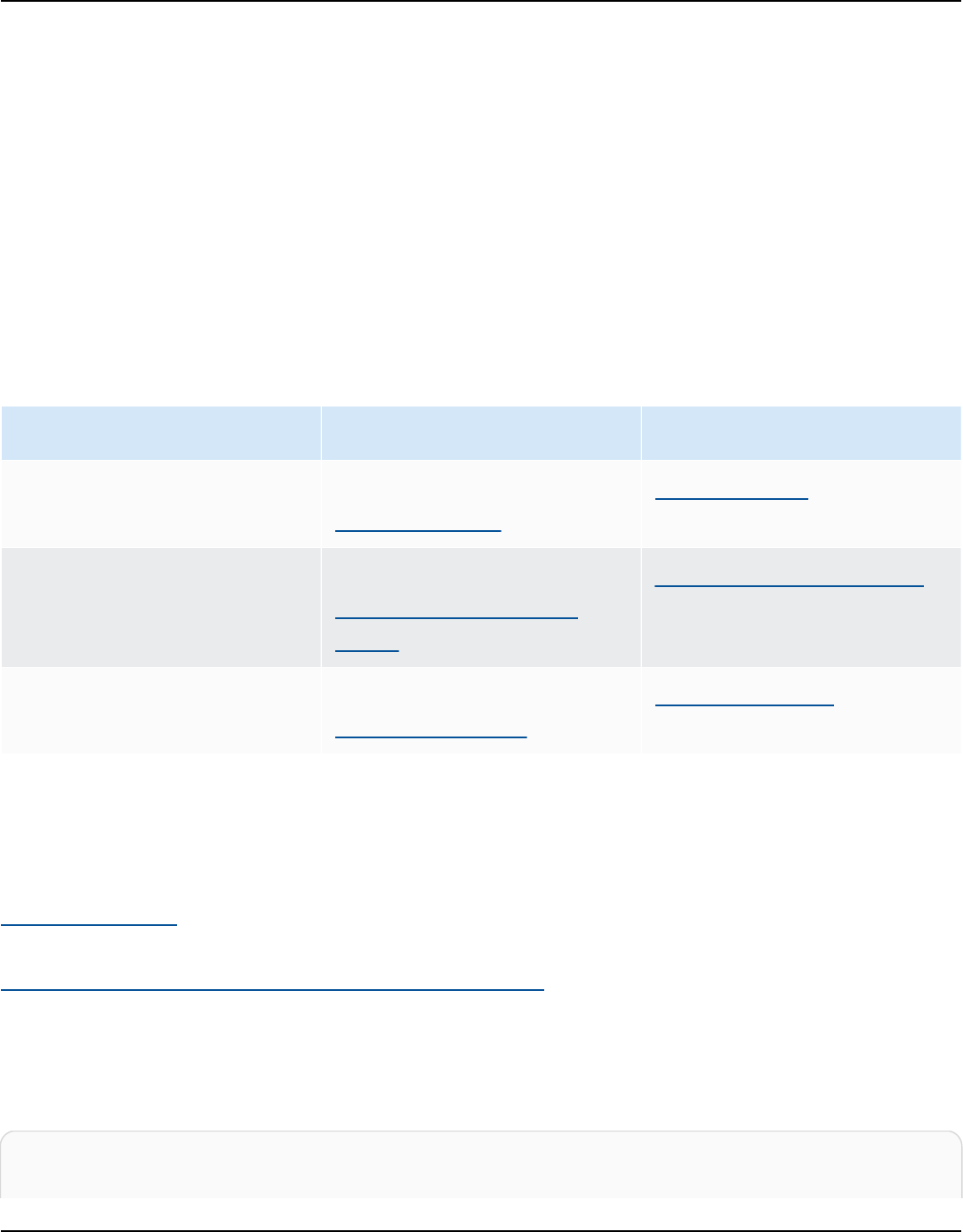
Service Quotas User Guide
6. You can add or remove tags, or you can edit tag values for existing tags. Enter a name for the
tag in Key. You can add an optional value for the tag in Value.
7. After making all of your changes to tags, choose Save changes.
If the operation is successful, you return to the quota details page where you can verify your
changes. If the operation fails, follow the instructions in the error message to resolve it.
Managing Service Quotas tags using the AWS CLI or API
To manage Service Quotas tags using the CLI or API, choose a management task and use the
corresponding CLI command or API call.
Tag management task CLI command API call
Add tags to applied quotas
aws service-quotas
tag-resource
TagResource
View tags for an applied
quota
aws service-quotas
list-tags-for-reso
urce
ListTagsForResource
Delete existing tag values for
applied quotas
aws service-quotas
untag-resource
UntagResource
Controlling access using Service Quotas tags
To control access to Service Quotas resources based on tags, you provide the tag information in the
condition element of a policy using the aws:ResourceTag/key-name, aws:RequestTag/key-
name, or aws:TagKeys condition keys. For more information about these condition keys, see
Controlling access to AWS resources using resource tags in the IAM User Guide.
For example, when you attach the following policy to an AWS Identity and Access Management
(IAM) role or user, that principal can request an increase to Amazon Athena applied quotas that are
tagged with the tag key Owner and tag value admin.
{
"Version": "2012-10-17",
Managing tags (CLI or API) 26

Service Quotas User Guide
"Statement": [
{
"Effect": "Allow",
"Action": ["servicequotas:RequestServiceQuotaIncrease"],
"Resource": "arn:aws:servicequotas:*:*:athena/*",
"Condition": {
"StringEquals": {"aws:ResourceTag/Owner": "admin"}
}
}
]
}
You can also attach tags to IAM principals to use attribute-based access control (ABAC). ABAC
is an authorization strategy that defines permissions based on attributes. Tagging entities and
resources is the first step of ABAC. Then you design ABAC policies to allow operations when the
principal's tag matches the tag on the resource that they're trying to access. ABAC is helpful
in environments that are growing rapidly and helps with situations where policy management
becomes cumbersome.
For more information about ABAC, see What is ABAC? in the IAM User Guide. To view a tutorial with
steps for setting up ABAC, see IAM tutorial: Define permissions to access AWS resources based on
tags in the IAM User Guide.
Controlling access using tags 27

Service Quotas User Guide
Using Service Quotas request templates
Note
You can use quota request templates only with AWS accounts that are members of an
organization managed by AWS Organizations.
A quota request template helps you save time when customizing quotas for new AWS accounts
in your organization. To use a template, configure the desired service quota increases for new
accounts. Then, enable template association. This associates the template with your organization
in AWS Organizations. Whenever new accounts are created in your organization, the template
automatically requests quota increases for you.
To use a request template, you must use AWS Organizations and the new accounts must be created
in the same organization. Your organization must have all features enabled, all features. If you use
consolidated billing features only, you can't use quota request templates.
You can update the request template by adding or removing service quotas. You can also increase
the values for adjustable quotas. As soon as you adjust the template, those service quota values are
requested for new accounts. Updating a request template doesn't update quota values for existing
accounts.
To enable template association
1. Sign in to the AWS Management Console and open the Service Quotas console at https://
console.aws.amazon.com/servicequotas/home.
2. In the navigation pane, expand Organization, and then choose Quota request template.
3. In the Template association section, choose Enable.
To add a quota to your request template
1. Sign in to the AWS Management Console and open the Service Quotas console at https://
console.aws.amazon.com/servicequotas/home.
2. In the navigation pane, expand Organization, and then choose Quota request template.
3. In the Added quotas section, choose Add quota.
28

Service Quotas User Guide
Note
You add up to 10 quotas to your request template.
4. On the Add quota page, choose a Region, Service, Quota, and Desired quota value, and then
choose Add.
To remove a quota from your request template
You can remove service quota requests from the template regardless of whether the template is
associated with an organization. If you reach the maximum number of service quota requests, you
might need to remove some quotas from your request template.
1. Sign in to the AWS Management Console and open the Service Quotas console at https://
console.aws.amazon.com/servicequotas/home.
2. In the navigation pane, expand Organization, and then choose Quota request template.
3. In the Added quotas section, select the option button for the quota that you want to remove.
4. Choose Remove.
To disable the template association
If you disable the automatic template association, new accounts receive the AWS default quota
values for all quotas. Disabling the template association from the organization doesn't delete
the service quota requests from the template. You can continue to edit the service quotas in the
template.
1. Sign in to the AWS Management Console and open the Service Quotas console at https://
console.aws.amazon.com/servicequotas/home.
2. In the navigation pane, expand Organization, and then choose Quota request template.
3. In the Template association section, choose Disable.
29

Service Quotas User Guide
Security in Service Quotas
Cloud security at AWS is the highest priority. As an AWS customer, you benefit from data centers
and network architectures that are built to meet the requirements of the most security-sensitive
organizations.
Security is a shared responsibility between AWS and you. The shared responsibility model describes
this as security of the cloud and security in the cloud:
• Security of the cloud – AWS is responsible for protecting the infrastructure that runs AWS
services in the AWS Cloud. AWS also provides you with services that you can use securely. Third-
party auditors regularly test and verify the effectiveness of our security as part of the AWS
Compliance Programs. To learn about the compliance programs that apply to Service Quotas, see
AWS Services in Scope by Compliance Program.
• Security in the cloud – Your responsibility is determined by the AWS service that you use. You
are also responsible for other factors including the sensitivity of your data, your company’s
requirements, and applicable laws and regulations.
This documentation helps you understand how to apply the shared responsibility model when
using Service Quotas. The following topics show you how to configure Service Quotas to meet your
security and compliance objectives. You also learn how to use other AWS services that help you to
monitor and secure your Service Quotas resources.
Contents
• Data protection in Service Quotas
• Logging and monitoring Service Quotas
• Identity and access management in Service Quotas
• Compliance validation for Service Quotas
• Resilience in Service Quotas
• Infrastructure Security in Service Quotas
Data protection in Service Quotas
The AWS shared responsibility model applies to data protection in Service Quotas. As described
in this model, AWS is responsible for protecting the global infrastructure that runs all of the
Data protection 30

Service Quotas User Guide
AWS Cloud. You are responsible for maintaining control over your content that is hosted on this
infrastructure. You are also responsible for the security configuration and management tasks for
the AWS services that you use. For more information about data privacy, see the Data Privacy FAQ.
For information about data protection in Europe, see the AWS Shared Responsibility Model and
GDPR blog post on the AWS Security Blog.
For data protection purposes, we recommend that you protect AWS account credentials and set
up individual users with AWS IAM Identity Center or AWS Identity and Access Management (IAM).
That way, each user is given only the permissions necessary to fulfill their job duties. We also
recommend that you secure your data in the following ways:
• Use multi-factor authentication (MFA) with each account.
• Use SSL/TLS to communicate with AWS resources. We require TLS 1.2 and recommend TLS 1.3.
• Set up API and user activity logging with AWS CloudTrail.
• Use AWS encryption solutions, along with all default security controls within AWS services.
• Use advanced managed security services such as Amazon Macie, which assists in discovering and
securing sensitive data that is stored in Amazon S3.
• If you require FIPS 140-3 validated cryptographic modules when accessing AWS through a
command line interface or an API, use a FIPS endpoint. For more information about the available
FIPS endpoints, see Federal Information Processing Standard (FIPS) 140-3.
We strongly recommend that you never put confidential or sensitive information, such as your
customers' email addresses, into tags or free-form text fields such as a Name field. This includes
when you work with Service Quotas or other AWS services using the console, API, AWS CLI, or AWS
SDKs. Any data that you enter into tags or free-form text fields used for names may be used for
billing or diagnostic logs. If you provide a URL to an external server, we strongly recommend that
you do not include credentials information in the URL to validate your request to that server.
Encryption at rest
Quota-related information, such as applied quota values and quota request history, are encrypted
at rest. Unique encryption keys are used for each Region.
Encryption in transit
Customer requests and all associated data is encrypted in transit using Transport Later Security
(TLS) 1.2 or later. All Service Quotas endpoints support HTTPS for encrypting data in transit.
Encryption at rest 31

Service Quotas User Guide
Logging and monitoring Service Quotas
Overview
Monitoring is an important part of maintaining the reliability, availability, and performance of
Service Quotas and your other AWS solutions. AWS provides the following monitoring tools
to watch Service Quotas, report when something is wrong, and take automatic actions when
appropriate:
• AWS CloudTrail captures API calls and related events made by or on behalf of your AWS account
and delivers the log files to an Amazon S3 bucket that you specify. You can identify which users
and accounts called AWS, the source IP address from which the calls were made, and when the
calls occurred. For more information, see the AWS CloudTrail User Guide.
• Amazon CloudWatch monitors your AWS resources and the applications you run on AWS in real
time. You can collect and track metrics, create customized dashboards, and set alarms that notify
you or take actions when a specified metric reaches a threshold that you specify. For example,
you can have CloudWatch track CPU usage or other metrics of your Amazon EC2 instances
and automatically launch new instances when needed. For more information, see the Amazon
CloudWatch User Guide.
Logging Service Quotas API calls using AWS CloudTrail
Service Quotas is integrated with AWS CloudTrail, a service that provides a record of actions
taken by a user, role, or an AWS service in Service Quotas. CloudTrail captures all API calls for
Service Quotas as events. The calls captured include calls from the Service Quotas console and
code calls to the Service Quotas API operations. If you create a trail, you can enable continuous
delivery of CloudTrail events to an Amazon S3 bucket, including events for Service Quotas. If you
don't configure a trail, you can still view the most recent events in the CloudTrail console in Event
history. Using the information collected by CloudTrail, you can determine the request that was
made to Service Quotas, the IP address from which the request was made, who made the request,
when it was made, and additional details.
To learn more about CloudTrail, see the AWS CloudTrail User Guide.
Service Quotas information in CloudTrail
CloudTrail is enabled on your AWS account when you create the account. When activity occurs in
Service Quotas, that activity is recorded in a CloudTrail event along with other AWS service events
Logging and monitoring 32

Service Quotas User Guide
in Event history. You can view, search, and download recent events in your AWS account. For more
information, see Viewing events with CloudTrail Event history.
For an ongoing record of events in your AWS account, including events for Service Quotas, create
a trail. A trail enables CloudTrail to deliver log files to an Amazon S3 bucket. By default, when
you create a trail in the console, the trail applies to all AWS Regions. The trail logs events from all
Regions in the AWS partition and delivers the log files to the Amazon S3 bucket that you specify.
Additionally, you can configure other AWS services to further analyze and act upon the event data
collected in CloudTrail logs. For more information, see the following:
• Overview for creating a trail
• CloudTrail supported services and integrations
• Configuring Amazon SNS notifications for CloudTrail
• Receiving CloudTrail log files from multiple regions and Receiving CloudTrail log files from
multiple accounts
All Service Quotas actions are logged by CloudTrail and are documented in the Service Quotas API
Reference. For example, calls to the GetServiceQuota, RequestServiceQuotaIncrease and
ListAWSDefaultServiceQuotas actions generate entries in the CloudTrail log files.
Every event or log entry contains information that helps you determine who made the request.
• AWS account root credentials.
• Temporary security credentials from an AWS Identity and Access Management role or federated
user.
• Long-term security credentials from an IAM user.
• Another AWS service.
For more information, see the CloudTrail userIdentity element.
Understanding Service Quotas log file entries
A trail is a configuration that enables delivery of events as log files to an Amazon S3 bucket that
you specify. CloudTrail log files contain one or more log entries. An event represents a single
request from any source and includes information about the requested action, the date and time of
the action, request parameters, and so on. CloudTrail log files aren't an ordered stack trace of the
public API calls, so they don't appear in any specific order.
Logging Service Quotas APIs with CloudTrail 33

Service Quotas User Guide
The following example shows a CloudTrail log entry that demonstrates the
RequestQuotaIncrease action.
{
"eventVersion": "1.08",
"userIdentity": {
"type": "IAMUser",
"principalId": "AIDA123456789012Example",
"arn": "arn:aws:iam::123456789012:user/admin",
"accountId": "123456789012",
"accessKeyId": "AKIAIOSFODNN7EXAMPLE",
"userName": " admin",
"sessionContext": {
"sessionIssuer": {},
"webIdFederationData": {},
"attributes": {
"creationDate": "2022-01-24T16:57:04Z",
"mfaAuthenticated": "true"
}
}
},
"eventTime": "2022-01-24T17:00:15Z",
"eventSource": "servicequotas.amazonaws.com",
"eventName": "RequestServiceQuotaIncrease",
"awsRegion": "us-east-1",
"sourceIPAddress": "172.21.16.1",
"userAgent": "aws-internal/3 aws-sdk-java/1.12.127
Linux/5.4.147-83.259.amzn2int.x86_64 OpenJDK_64-Bit_Server_VM/25.312-b07
java/1.8.0_312 vendor/Oracle_Corporation cfg/retry-mode/standard",
"requestParameters": {
"serviceCode": "ec2",
"quotaCode": "L-CEED54BB",
"desiredValue": 10
},
"responseElements": {
"requestedQuota": {
"id": "cd3ad3d9-2776-4ef1-a904-4c229d1642ee",
"serviceCode": "ec2",
"serviceName": "Amazon Elastic Compute Cloud (Amazon EC2)",
"quotaCode": "L-CEED54BB",
"quotaName": "EC2-Classic Elastic IPs",
"desiredValue": 10,
"status": "PENDING",
Logging Service Quotas APIs with CloudTrail 34

Service Quotas User Guide
"created": "Jan 24, 2022 5:00:15 PM",
"requester": "{\"accountId\":\"123456789012\",\"callerArn\":
\"arn:aws:iam::123456789012:user/admin\"}",
"quotaArn": "arn:aws:servicequotas:us-east-1:123456789012:ec2/L-CEED54BB",
"globalQuota": false,
"unit": "None"
}
},
"requestID": "3d3f5cdc-af30-4121-b69a-84b2f5c33be5",
"eventID": "0cb51588-e460-4e00-bc48-a9d4820cad83",
"readOnly": false,
"eventType": "AwsApiCall",
"managementEvent": true,
"recipientAccountId": "123456789012",
"eventCategory": "Management"
}
This example shows that the user named admin generated a request for additional Amazon Elastic
Compute Cloud Elastic IP addresses on January 24, 2022. The requested increase was 10, an
increase of 5 from the default quota of 5.
The following is an example of an approved quota increase in Service Quotas:
{
"eventVersion": "1.08",
"userIdentity": {
"accountId": "123456789012",
"invokedBy": "servicequotas.amazonaws.com"
},
"eventTime": "2022-01-24T17:02:17Z",
"eventSource": "servicequotas.amazonaws.com",
"eventName": "UpdateServiceQuotaIncreaseRequestStatus",
"awsRegion": "us-east-1",
"sourceIPAddress": "servicequotas.amazonaws.com",
"userAgent": "servicequotas.amazonaws.com",
"requestParameters": null,
"responseElements": null,
"eventID": "e331b0a0-9395-4895-aeba-73cbab9ebcb0",
"readOnly": false,
"eventType": "AwsServiceEvent",
"managementEvent": true,
"recipientAccountId": "123456789012",
"serviceEventDetails": {
Logging Service Quotas APIs with CloudTrail 35

Service Quotas User Guide
"requestId": "cdc5f1f78739459e6642407bb2bZKO8GKUM",
"newStatus": "CASE_CLOSED",
"createTime": "2022-01-24T17:00:15.363Z",
"newQuotaValue": "10.0",
"serviceName": "Amazon Elastic Compute Cloud (Amazon EC2)",
"quotaName": "EC2-Classic Elastic IPs",
"unit": "None"
},
"eventCategory": "Management"
}
From the serviceEventDetails section, you can determine that AWS Support approved
the request for a quota increase to 10 Elastic IP addresses, and closed the request. The
newQuotaValue displays 10 as the new quota.
Service Quotas and Amazon CloudWatch alarms
You can create Amazon CloudWatch alarms to notify you when you're close to a quota value
threshold. Setting an alarm can help alert you if you need to request a quota increase.
To create a CloudWatch alarm for a quota
1. Sign in to the AWS Management Console and open the Service Quotas console at https://
console.aws.amazon.com/servicequotas/home.
2. In the navigation pane, choose AWS services and then select a service.
3. Select a quota that supports CloudWatch alarms.
If you actively use the quota, utilization appears beneath the quota description. If CloudWatch
alarms are supported, the CloudWatch alarms section appears at the bottom of the page.
4. In Amazon CloudWatch alarms, choose Create.
5. For Alarm threshold, choose a threshold.
6. For Alarm name, enter a name for the alarm. This name must be unique within the AWS
account.
7. Choose Create.
Using CloudWatch alarms 36

Service Quotas User Guide
Note
To add a notification to the CloudWatch alarm, see Creating a CloudWatch alarm based on
a static threshold in the Amazon CloudWatch User Guide.
To delete a CloudWatch alarm
1. Choose the service quota with the alarm.
2. Select the alarm.
3. Choose Delete.
Identity and access management in Service Quotas
AWS uses security credentials to identify you and to grant you access to your AWS resources. You
can use features of AWS Identity and Access Management (IAM) to allow other users, services, and
applications to use your AWS resources fully or in a limited way. You can do this without sharing
your security credentials.
By default, principals, such as IAM roles or users, don't have permission to create, view, or modify
AWS resources. To allow a principal to access resources such as a load balancer, and to perform
tasks, perform the following steps:
1. Create an IAM policy that grants the principal permission to use the specific resources and API
actions they need.
2. Attach the policy to the IAM principal or the group that the principal belongs to.
When you attach a policy to a user or group of users, it allows or denies the users permission to
perform the specified tasks on the specified resources.
For example, you can use IAM to create roles or users as the principals in your AWS account. A
principal can represent a person, a system, or an application. Then you grant permissions to the
principals to perform specific actions on the specified resources using an IAM policy.
Grant permissions using IAM policies
When you attach a policy to a principal or a group of principals, it allows or denies those principals
permission to perform the specified tasks on the specified resources.
Identity and access management 37

Service Quotas User Guide
An IAM policy is a JSON document that consists of one or more statements. Each statement is
structured as shown in the following example.
{
"Version": "2012-10-17",
"Statement":[{
"Effect": "effect",
"Action": "action",
"Resource": "resource-arn",
"Condition": {
"condition": {
"key":"value"
}
}
}]
}
•
Effect – The value for effect can be either Allow or Deny. By default, IAM principals don't
have permission to use resources and API actions, so all requests are denied. An explicit allow
overrides the default. An explicit deny overrides any allows.
•
Action – The value for action is the specific API action for which you are granting or denying
permission. For more information about specifying Action, see API actions for Service Quotas.
•
Resource – The resource that's affected by the action. With some Service Quotas API actions,
you can restrict the permissions granted or denied to a specific quota. To do so, specify its
Amazon Resource Name (ARN) in this statement. Otherwise, you can use the wildcard character
(*) to specify all Service Quotas resources. For more information, see Service Quotas resources.
•
Condition – You can optionally use conditions to control when your policy is in effect. For more
information, see Condition keys for Service Quotas.
For more information, see the IAM User Guide.
AWS managed policies for Service Quotas
An AWS managed policy is a standalone policy that is created and administered by AWS. AWS
managed policies are designed to provide permissions for many common use cases so that you can
start assigning permissions to users, groups, and roles.
AWS managed policies 38

Service Quotas User Guide
Keep in mind that AWS managed policies might not grant least-privilege permissions for your
specific use cases because they're available for all AWS customers to use. We recommend that you
reduce permissions further by defining customer managed policies that are specific to your use
cases.
You cannot change the permissions defined in AWS managed policies. If AWS updates the
permissions defined in an AWS managed policy, the update affects all principal identities (users,
groups, and roles) that the policy is attached to. AWS is most likely to update an AWS managed
policy when a new AWS service is launched or new API operations become available for existing
services.
For more information, see AWS managed policies in the IAM User Guide.
AWS managed policy: ServiceQuotasFullAccess
You can attach ServiceQuotasFullAccess to your users, groups, and roles.
This policy grants permissions that allow full administrative control of the Service Quotas service.
You can perform all tasks involved in viewing and managing your quotas for AWS services in
Service Quotas in the AWS Regions in your account.
Permissions details
This policy includes permissions that allow all actions for Service Quotas, including viewing
AWS default values and applied values, requesting a service quota increase, and viewing current
utilization of resources. This policy also includes 18 permissions that are not part of Service
Quotas and can be broadly split into non-mutating and mutating operations. Non-mutating
operations include permissions from trusted advisors to retrieve applied quota value and view
current utilization of resources. Mutating operations include permission to create and delete alarms
on utilization of resources, and permissions to create the service-linked role necessary to create a
support case on your behalf while requesting a quota increase.
This policy includes the following non-mutating and mutating operations that are not part of
Service Quotas:
Non-mutating operations
•
autoscaling:DescribeAccountLimits – Allows Service Quotas to retrieve applied quota
value for AWS Auto Scaling quotas.
AWS managed policies 39

Service Quotas User Guide
•
cloudformation:DescribeAccountLimits – Allows Service Quotas to retrieve applied
quota value for AWS CloudFormation quotas.
•
cloudwatch:DescribeAlarmsForMetric – Allows you to retrieve alarms for specified
metrics from Service Quotas that were created for notifying automatically whenever a specified
quota reaches a percentage of the maximum or reaches the maximum level.
•
cloudwatch:DescribeAlarms – Allows you to retrieve alarms from Service Quotas that were
created for notifying automatically whenever a specified quota reaches a percentage of the
maximum or reaches the maximum level.
•
cloudwatch:GetMetricData – Allows Service Quotas to view current utilization of resources.
•
cloudwatch:GetMetricStatistics – Allows Service Quotas to view current utilization of
resources.
•
dynamodb:DescribeLimits – Allows Service Quotas to retrieve applied quota value for
DynamoDB quotas.
•
elasticloadbalancing:DescribeAccountLimits – Allows Service Quotas to retrieve
applied quota value for Elastic Load Balancing quotas.
•
iam:GetAccountSummary – Allows Service Quotas to retrieve applied quota value for IAM.
•
kinesis:DescribeLimits – Allows Service Quotas to retrieve applied quota value for Amazon
Kinesis quotas.
•
organizations:DescribeAccount and organizations:DescribeOrganization –
Allows Service Quotas to create and execute quota templates.
•
rds:DesceibeAccountAttributes – Allows Service Quotas to retrieve applied quota value
for Amazon RDS quotas.
•
route53:GetAccountLimit – Allows Service Quotas to retrieve applied quota value for
Amazon Route53 quotas.
•
tag:GetTagKeys – Allows Service Quotas to get tag keys currently in use in the specified AWS
Region for the calling account.
•
tag:GetTagValues – Allows Service Quotas to get tag values for the specified key that are
used in the specified AWS Region for the calling account.
Mutating operations
•
cloudwatch:PutMetricAlarm – Allows Service Quotas to create an alarm for notifying
you automatically whenever a specified quota reaches a percentage of the maximum or the
maximum level.
AWS managed policies 40
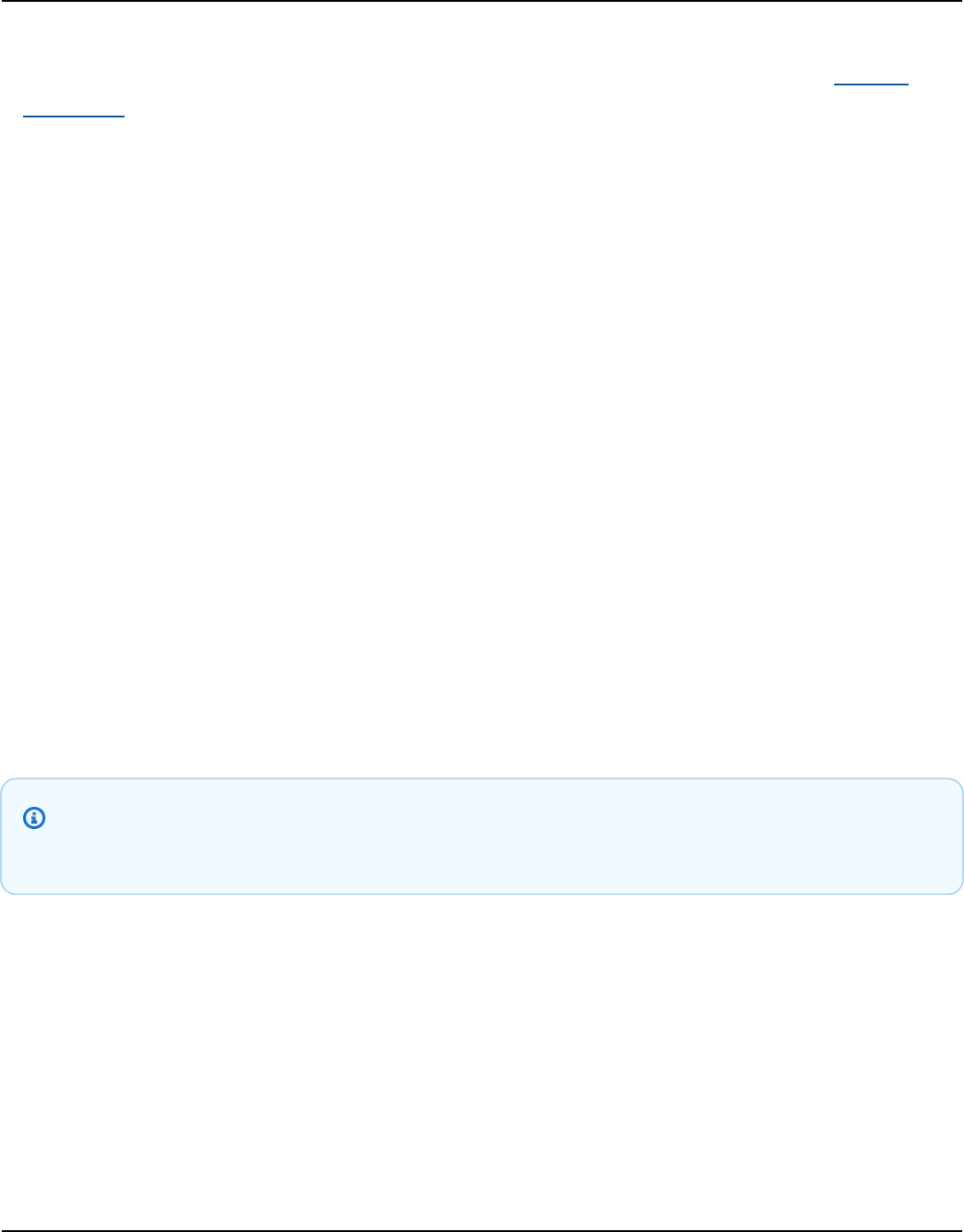
Service Quotas User Guide
•
cloudwatch:DeleteAlarms – Allows Service Quotas to delete the specified alarm.
•
organizations:EnableAWSServiceAccess – Allows Service Quotas to create a service-
linked role in all the accounts in your organization. This allows Service Quotas to perform
operations on your behalf in your organization and its accounts.
•
iam:CreateServicelinkedRole – Allows Service Quotas to create an IAM role that allows
Service Quotas to create a support case on your behalf when you request a quota increase.
To see the latest version of this AWS managed policy, see ServiceQuotasFullAccess in the
AWS Managed Policy Reference Guide.
AWS managed policy: ServiceQuotasReadOnlyAccess
You can attach ServiceQuotasReadOnlyAccess to your users, groups, and roles.
This policy grants permissions that allow users to view their AWS default quotas, applied quotas,
and view current utilization of resources.
Permissions details
This policy includes permissions that allow your to perform the Service Quotas Get*, and List*
operations to view your AWS default quotas and applied quotas. You can also view current
utilization of resources.
Note
This policy does not allow you to request a service quota increase.
This policy includes the following non-mutating operations that are not part of Service Quotas:
Non-mutating operations
•
autoscaling:DescribeAccountLimits – Allows Service Quotas to retrieve applied quota
value for AWS Auto Scaling quotas.
•
cloudformation:DescribeAccountLimits – Allows Service Quotas to retrieve applied
quota value for AWS CloudFormation quotas.
AWS managed policies 41

Service Quotas User Guide
•
cloudwatch:DescribeAlarmsForMetric – Allows you to retrieve alarms for specified
metrics from Service Quotas that were created for notifying automatically whenever a specified
quota reaches a percentage of the maximum or reaches the maximum level.
•
cloudwatch:DescribeAlarms – Allows you to retrieve alarms from Service Quotas that were
created for notifying automatically whenever a specified quota reaches a percentage of the
maximum or reaches the maximum level.
•
cloudwatch:GetMetricData – Allows Service Quotas to view current utilization of resources.
•
cloudwatch:GetMetricStatistics – Allows Service Quotas to view current utilization of
resources.
•
dynamodb:DescribeLimits – Allows Service Quotas to retrieve applied quota value for
DynamoDB quotas.
•
elasticloadbalancing:DescribeAccountLimits – Allows Service Quotas to retrieve
applied quota value for Elastic Load Balancing quotas.
•
iam:GetAccountSummary – Allows Service Quotas to retrieve applied quota value for IAM.
•
kinesis:DescribeLimits – Allows Service Quotas to retrieve applied quota value for Amazon
Kinesis quotas.
•
organizations:DescribeAccount and organizations:DescribeOrganization –
Allows Service Quotas to create and execute quota templates.
•
rds:DesceibeAccountAttributes – Allows Service Quotas to retrieve applied quota value
for Amazon RDS quotas.
•
route53:GetAccountLimit – Allows Service Quotas to retrieve applied quota value for
Amazon Route53 quotas.
•
tag:GetTagKeys – Allows Service Quotas to get tag keys currently in use in the specified AWS
Region for the calling account.
•
tag:GetTagValues – Allows Service Quotas to get tag values for the specified key that are
used in the specified AWS Region for the calling account.
To see the latest version of this AWS managed policy, see ServiceQuotasReadOnlyAccess in
the AWS Managed Policy Reference Guide.
AWS managed policy: ServiceQuotasServiceRolePolicy
AWS managed policies 42
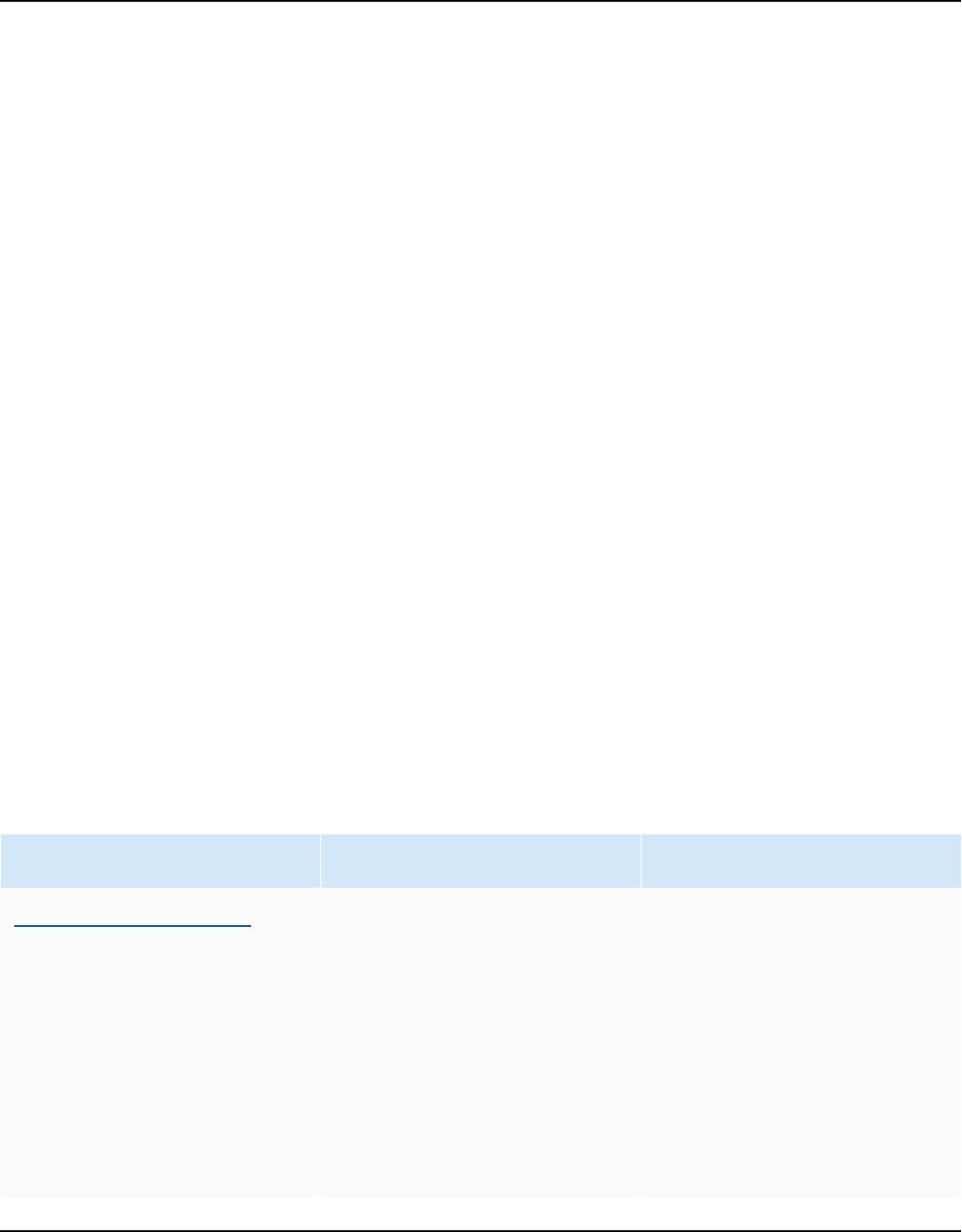
Service Quotas User Guide
This policy is attached to a service-linked role that allows the service to perform actions on your
behalf. You cannot attach this policy to your users, groups, or roles.
This policy grants permissions that allows Service Quotas to create support cases on your behalf.
Permissions details
This policy includes the following operations:
•
support:CreateCase – Allows Service Quotas to create support cases on your behalf when
you request a quota increase.
•
support:DescribeCases – Allows Service Quotas to retrieve the details and status of your
support case for the quota increase request.
•
support:RresolveCase – Allows Service Quotas to resolve support cases on your behalf.
To see the latest version of this AWS managed policy, see ServiceQuotasServiceRolePolicy
in the AWS Managed Policy Reference Guide.
Service Quotas updates to AWS managed policies
View details about updates to AWS managed policies for Service Quotas since this service began
tracking these changes. For automatic alerts about changes to this page, subscribe to the RSS feed
on the Service Quotas Document history page.
Change Description Date
ServiceQuotasFullAccess –
New policy
Added a new AWS managed
policy that allows full
administrative control of the
Service Quotas service. You
can perform all tasks involved
in viewing and managing your
quotas for AWS services in
Service Quotas in the AWS
Regions in your account.
May 30, 2024
AWS managed policies 43
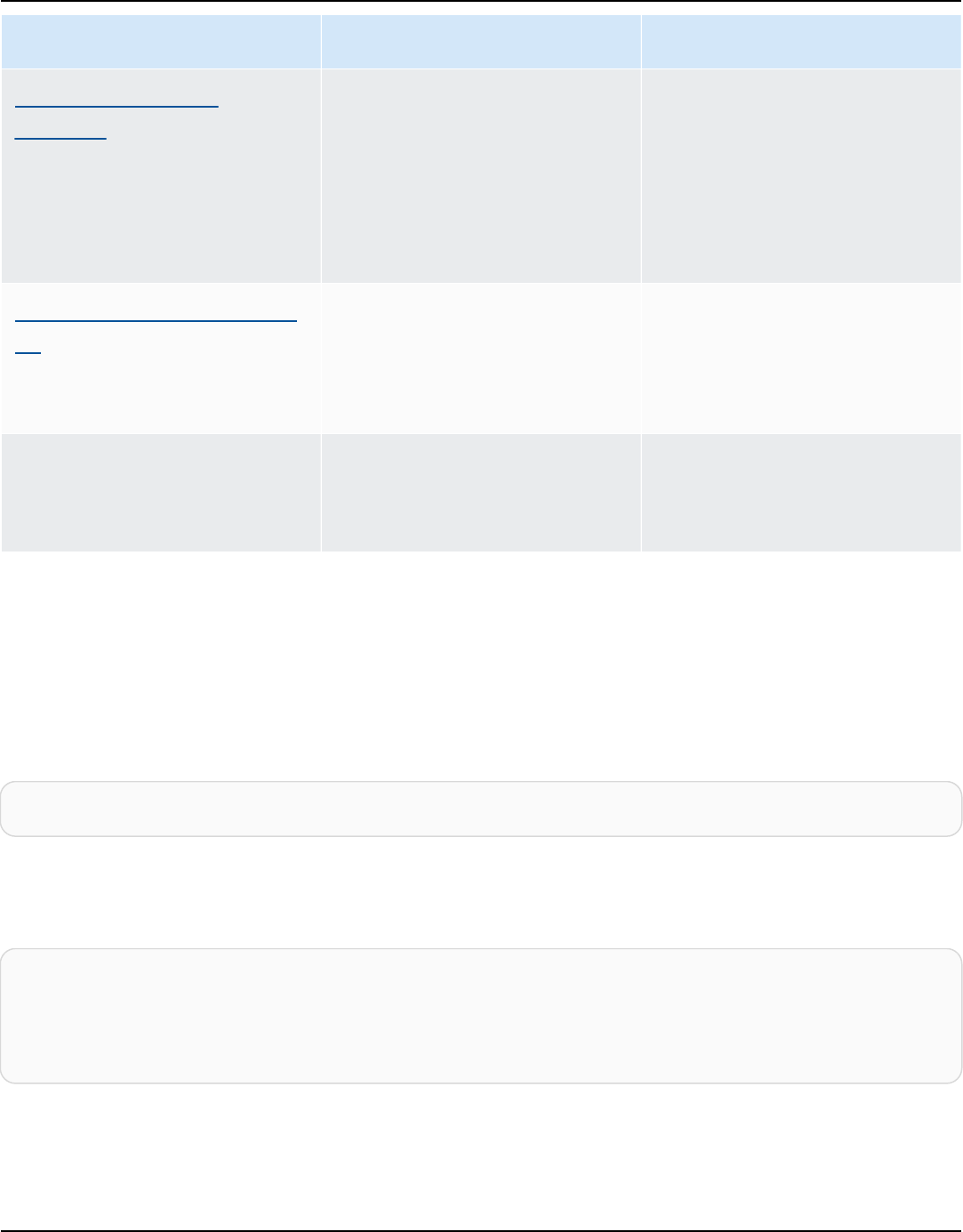
Service Quotas User Guide
Change Description Date
ServiceQuotasReadO
nlyAccess – New policy
Added a new AWS managed
policy that allows users
to view their AWS default
quotas, applied quotas, and
view current utilization of
resources.
May 30, 2024
ServiceQuotasServiceRolePol
icy – New policy
Added a new AWS managed
policy that allows Service
Quotas to create support
cases on your behalf.
May 30, 2024
Service Quotas started
tracking changes
Service Quotas started
tracking changes for its AWS
managed policies.
May 30, 2024
API actions for Service Quotas
In the Action element of your IAM policy statement, you can specify any API action that Service
Quotas offers. You must prefix the action name with the lowercase string servicequotas:, as
shown in the following example.
"Action": "servicequotas:GetServiceQuota"
To specify multiple actions in a single statement, enclose them in square brackets and separate
them with a comma, as shown in the following example.
"Action": [
"servicequotas:ListRequestedServiceQuotaChangeHistory",
"servicequotas:ListRequestedServiceQuotaChangeHistoryByQuota"
]
You can also specify multiple actions using the wildcard character (*). The following example
specifies all API action names for Service Quotas that start with Get.
API actions for Service Quotas 44
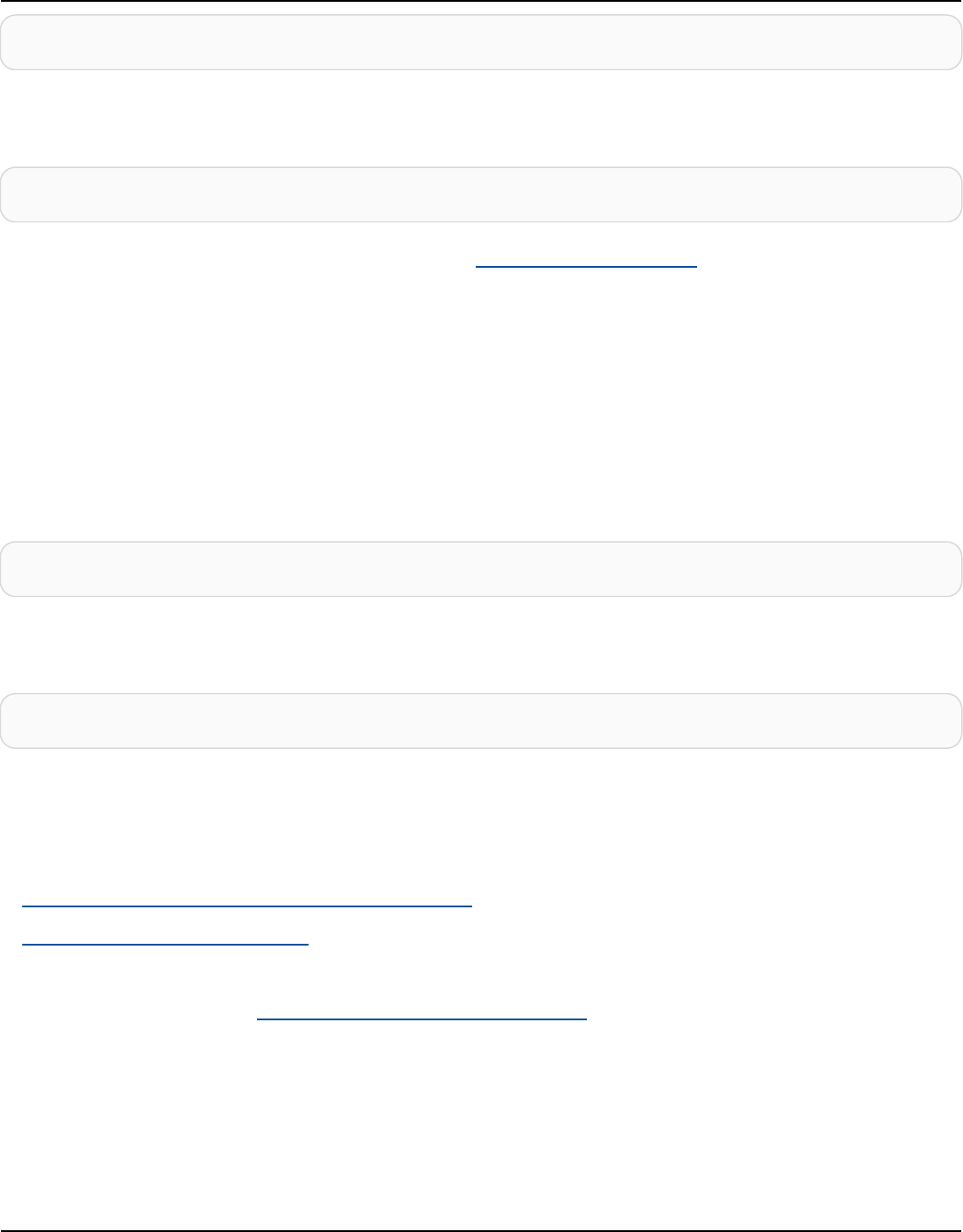
Service Quotas User Guide
"Action": "servicequotas:Get*"
To specify all API actions for Service Quotas, use the wildcard character (*), as shown in the
following example.
"Action": "servicequotas:*"
For the list of API actions for Service Quotas, see Service Quotas Actions.
Service Quotas resources
Resource-level permissions refers to the ability to specify which resources users are allowed to
perform actions on. For API actions that support resource-level permissions, you can control the
resources that users are allowed to use with the action. To specify a resource in a policy statement,
you must use its Amazon Resource Name (ARN).
The ARN for a quota has the format shown in the following example.
arn:aws:servicequotas:region-code:account-id:service-code/quota-code
For API actions that don't support resource-level permissions, you must specify the resource
statement shown in the following example.
"Resource": "*"
Resource-level permissions for Service Quotas
The following Service Quotas actions support resource-level permissions:
• PutServiceQuotaIncreaseRequestIntoTemplate
• RequestServiceQuotaIncrease
For more information, see Actions defined by Service Quotas in the Service Authorization Reference.
Condition keys for Service Quotas
When you create a policy, you can specify the conditions that control when the policy is in effect.
Each condition contains one or more key-value pairs. There are global condition keys and service-
specific condition keys.
Service Quotas resources 45

Service Quotas User Guide
The servicequotas:service key is specific to Service Quotas. The following Service Quotas API
actions support this key:
• PutServiceQuotaIncreaseRequestIntoTemplate
• RequestServiceQuotaIncrease
For more information about global condition keys, see AWS Global Condition Context Keys in the
IAM User Guide.
Predefined AWS managed policies for Service Quotas
The managed policies created by AWS grant the required permissions for common use cases. You
can attach these policies to your IAM principals, based on the access to Service Quotas that they
require:
•
ServiceQuotasFullAccess – Grants full access required to use Service Quotas features.
•
ServiceQuotasReadOnlyAccess – Grants read-only access to Service Quotas features.
Compliance validation for Service Quotas
To learn whether an AWS service is within the scope of specific compliance programs, see AWS
services in Scope by Compliance Program and choose the compliance program that you are
interested in. For general information, see AWS Compliance Programs.
You can download third-party audit reports using AWS Artifact. For more information, see
Downloading Reports in AWS Artifact.
Your compliance responsibility when using AWS services is determined by the sensitivity of your
data, your company's compliance objectives, and applicable laws and regulations. AWS provides the
following resources to help with compliance:
• Security and Compliance Quick Start Guides – These deployment guides discuss architectural
considerations and provide steps for deploying baseline environments on AWS that are security
and compliance focused.
• Architecting for HIPAA Security and Compliance on Amazon Web Services – This whitepaper
describes how companies can use AWS to create HIPAA-eligible applications.
Predefined AWS managed policies for Service Quotas 46
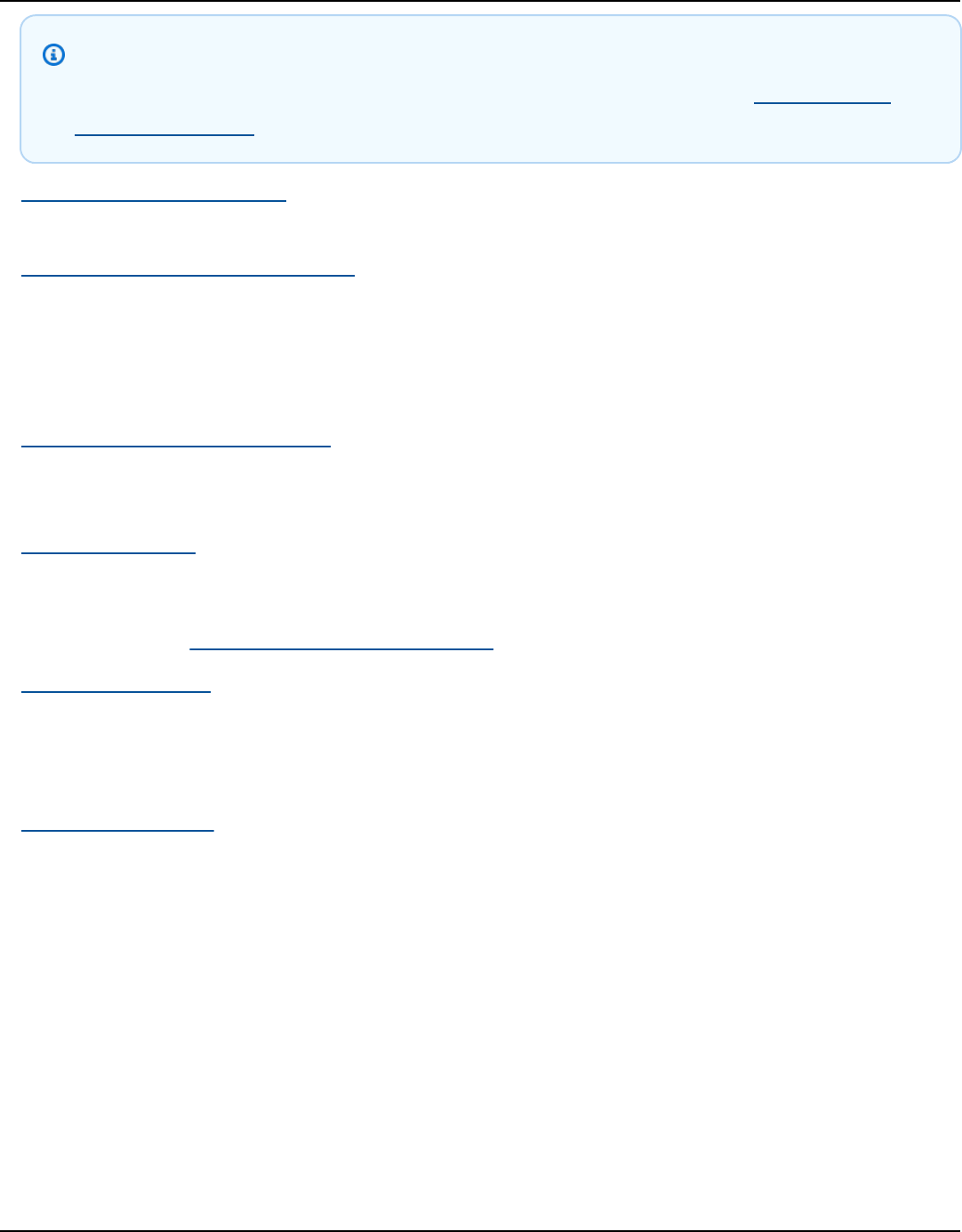
Service Quotas User Guide
Note
Not all AWS services are HIPAA eligible. For more information, see the HIPAA Eligible
Services Reference.
• AWS Compliance Resources – This collection of workbooks and guides might apply to your
industry and location.
• AWS Customer Compliance Guides – Understand the shared responsibility model through the
lens of compliance. The guides summarize the best practices for securing AWS services and map
the guidance to security controls across multiple frameworks (including National Institute of
Standards and Technology (NIST), Payment Card Industry Security Standards Council (PCI), and
International Organization for Standardization (ISO)).
• Evaluating Resources with Rules in the AWS Config Developer Guide – The AWS Config service
assesses how well your resource configurations comply with internal practices, industry
guidelines, and regulations.
• AWS Security Hub – This AWS service provides a comprehensive view of your security state within
AWS. Security Hub uses security controls to evaluate your AWS resources and to check your
compliance against security industry standards and best practices. For a list of supported services
and controls, see Security Hub controls reference.
• Amazon GuardDuty – This AWS service detects potential threats to your AWS accounts,
workloads, containers, and data by monitoring your environment for suspicious and malicious
activities. GuardDuty can help you address various compliance requirements, like PCI DSS, by
meeting intrusion detection requirements mandated by certain compliance frameworks.
• AWS Audit Manager – This AWS service helps you continuously audit your AWS usage to simplify
how you manage risk and compliance with regulations and industry standards.
Resilience in Service Quotas
The AWS global infrastructure is built around AWS Regions and Availability Zones. AWS Regions
provide multiple physically separated and isolated Availability Zones, which are connected with
low-latency, high-throughput, and highly redundant networking. With Availability Zones, you
can design and operate applications and databases that automatically fail over between zones
without interruption. Availability Zones are more highly available, fault tolerant, and scalable than
traditional single or multiple data center infrastructures.
Resilience 47

Service Quotas User Guide
For more information about AWS Regions and Availability Zones, see AWS Global Infrastructure.
In addition to the AWS global infrastructure, Service Quotas offers several features to help support
your data resiliency and backup needs.
Infrastructure Security in Service Quotas
As a managed service, Service Quotas is protected by AWS global network security. For information
about AWS security services and how AWS protects infrastructure, see AWS Cloud Security. To
design your AWS environment using the best practices for infrastructure security, see Infrastructure
Protection in Security Pillar AWS Well‐Architected Framework.
You use AWS published API calls to access Service Quotas through the network. Clients must
support the following:
• Transport Layer Security (TLS). We require TLS 1.2 and recommend TLS 1.3.
• Cipher suites with perfect forward secrecy (PFS) such as DHE (Ephemeral Diffie-Hellman) or
ECDHE (Elliptic Curve Ephemeral Diffie-Hellman). Most modern systems such as Java 7 and later
support these modes.
Additionally, requests must be signed by using an access key ID and a secret access key that is
associated with an IAM principal. Or you can use the AWS Security Token Service (AWS STS) to
generate temporary security credentials to sign requests.
You can call these API operations from any network location, but Service Quotas does support
resource-based access policies, which can include restrictions based on the source IP address.
Infrastructure Security 48
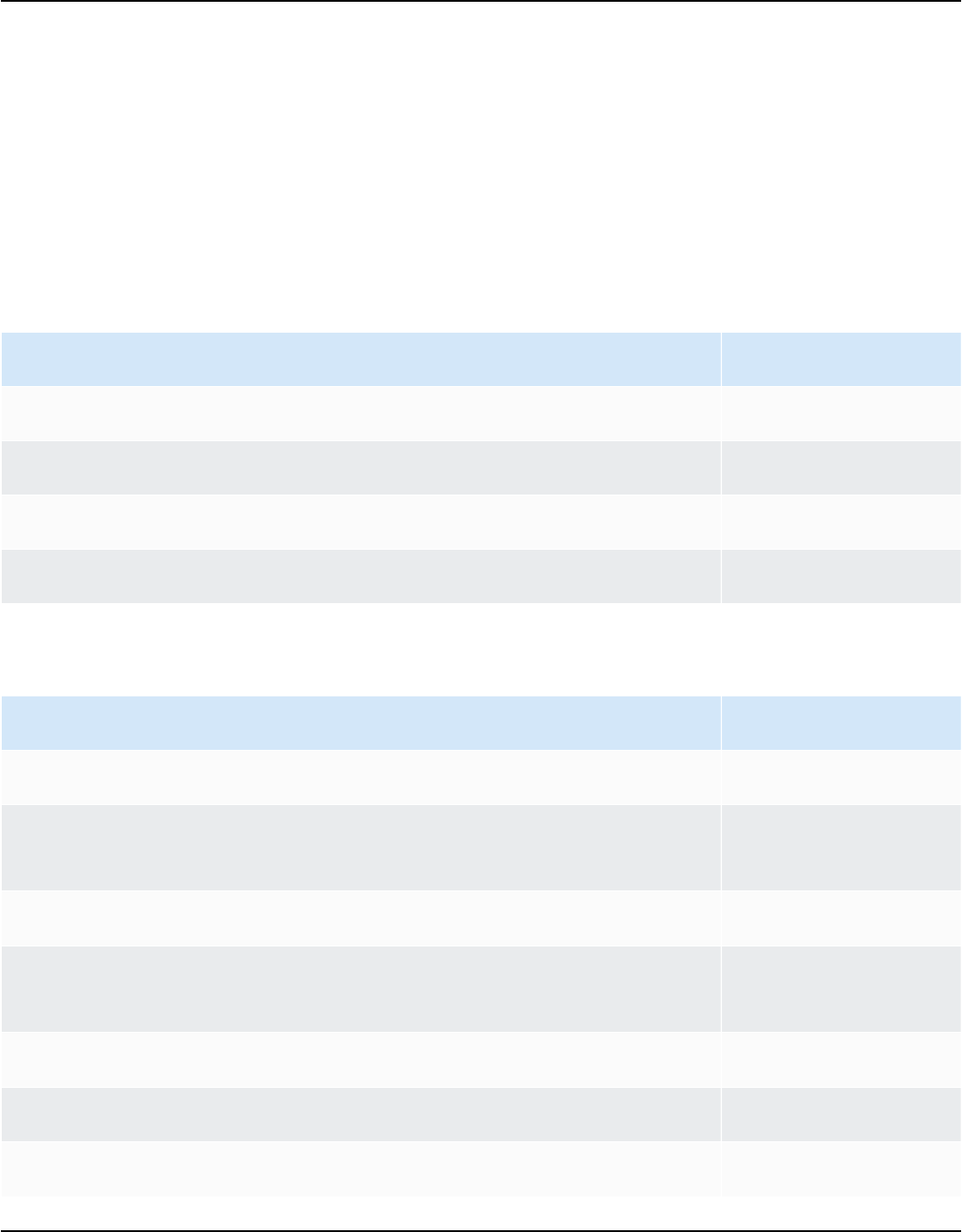
Service Quotas User Guide
Service quotas for Service Quotas
The following tables list the maximum values for Service Quotas resources for your AWS account.
All of these quota values are per AWS Region, unless noted otherwise.
You can't adjust these quota values.
Increase requests
Quota Default
Active service quota increase requests per account 20
Active service quota increase requests per Region 2
Active service quota increase requests per quota 1
Active service quota increase requests per resource 1
API request rates
Quota Default
GetAWSDefaultServiceQuota requests per second
5
Additional GetAWSDefaultServiceQuota requests per second
sent in one burst
5
GetRequestedServiceQuotaChange requests per second
5
Additional GetRequestedServiceQuotaChange requests per
second sent in one burst
5
GetServiceQuota requests per second
5
Additional GetServiceQuota requests per second sent in one burst
5
ListAWSDefaultServiceQuotas requests per second
10
49

Service Quotas User Guide
Quota Default
Additional ListAWSDefaultServiceQuotas requests per second
sent in one burst
10
ListRequestedServiceQuotaChangeHistory requests per
second
5
Additional ListRequestedServiceQuotaChangeHistory
requests per second sent in one burst
5
ListRequestedServiceQuotaChangeHistoryByQuota
requests per second
5
Additional ListRequestedServiceQuotaChangeHisto
ryByQuota requests per second sent in one burst
5
ListServiceQuotas requests per second
10
Additional ListServiceQuotas requests per second sent in one
burst
10
ListServices requests per second
10
Additional ListServices requests per second sent in one burst
10
ListTagsForResource requests per second
10
ListTagsForResource requests per second sent in one burst
10
RequestServiceQuotaIncrease requests per second
3
Additional RequestServiceQuotaIncrease requests per second
sent in one burst
3
TagResource requests per second
10
TagResource requests per second sent in one burst
10
UntagResource requests per second
10
50

Service Quotas User Guide
Quota Default
UntagResource requests per second sent in one burst
10
Quota request template API request rates
Quota Default
AssociateQuotaTemplate requests per second
1
Additional AssociateQuotaTemplate requests per second sent in
one burst
1
DeleteServiceQuotaIncreaseRequestFromTemplate
requests per second
2
Additional DeleteServiceQuotaIncreaseRequestFro
mTemplate requests per second sent in one burst
1
DisassociateQuotaTemplate requests per second
1
Additional DisassociateQuotaTemplate requests per second
sent in one burst
1
GetAssociationForQuotaTemplate requests per second
2
Additional GetAssociationForQuotaTemplate requests per
second sent in one burst
2
GetServiceQuotaIncreaseRequestFromTemplate requests
per second
2
Additional GetServiceQuotaIncreaseRequestFromTe
mplate requests per second sent in one burst
1
ListServiceQuotaIncreaseRequestsInTemplate requests
per second
2
51

Service Quotas User Guide
Quota Default
Additional ListServiceQuotaIncreaseRequestsInTe
mplate requests per second sent in one burst
1
PutServiceQuotaIncreaseRequestIntoTemplate requests
per second
1
Additional PutServiceQuotaIncreaseRequestIntoTe
mplate per second sent in one burst
1
Overall API request rate
Quota Default
API requests per AWS account (requests per second) 50
API requests per AWS Organization (requests per second) 100
52

Service Quotas User Guide
Service Quotas Document history
The following table describes the important changes to the documentation since the last release of
Service Quotas. For notification about updates to this documentation, you can subscribe to an RSS
feed.
Change Description Date
Updated content Updated topic titles and
reorganized content to
improve readability and
discoverability.
June 20, 2024
Adding new AWS managed
policies
You can now attach
ServiceQuotasFullA
ccess and ServiceQu
otasReadOnlyAccess
policies to your users, groups,
and roles.
May 30, 2024
Adding support for context
based quota management
You now have greater visibilit
y and control over your
service quotas. View applied
values, monitor usage, and
programmatically request
increases for quotas that
not only apply at the AWS
account level, but at the
resource level.
August 30, 2023
IAM best practices update Updated guide to align
with the IAM best practices
. For more information, see
Security best practices in IAM.
January 3, 2023
Tagging Service Quotas
resources
You can now attach tags to
applied quotas and write
December 21, 2020
53

